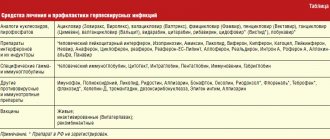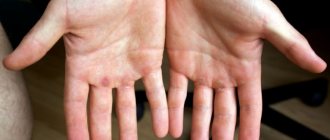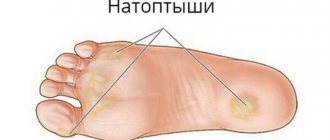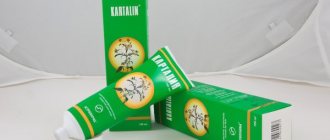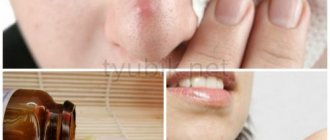The remedy for psoriasis can be either taken orally or applied to the rash. When choosing a drug individually for a patient, the doctor must take into account the form of the pathology, the severity of symptoms, and the general state of his health. To treat stage 1 or 2 disease, mainly external agents are used - ointments, creams, balms, gels. But with severe psoriasis, you cannot do without a course of taking pills. A high-quality drug should quickly cope with pain, redness and irritation of the skin, eliminate itching and burning.
Hormonal ointments
The development of any inflammatory process, including that accompanying the course of psoriasis, leads to the production of hormones by the kidneys. After they are released into the blood, a person’s well-being improves. Inflammation subsides, swelling decreases, pain and itching subside. All these properties are also characteristic of synthetic analogues of native hormones contained in ointments. The most popular external agents in the treatment of psoriasis are:
- Flucinar gel and ointment. Both dosage forms have antiexudative, antipruritic, antiallergic and anti-inflammatory effects. Flucinar copes with psoriasis of any localization, including those affecting the scalp. Gel or ointment is applied 2-4 times a day for no longer than 10 days;
- Hydrocortisone ointment. The drug was synthesized several decades ago, but is still in great demand in the treatment of psoriasis. It quickly relieves inflammation, stimulates the resorption of swelling, and reduces the severity of itching and burning. Hydrocortisone ointment is used up to 3 times a day. The duration of therapy varies from 1 to 3 weeks;
- Belosalik. The ointment contains salicylic acid, which gently exfoliates keratinized scales from psoriatic plaques. The second active ingredient, betamethasone, improves skin condition by blocking the synthesis of pain and inflammation mediators. A single application of Belosalik during the day for 3 weeks is sufficient.
Many hormonal ointments are intended for the treatment of psoriasis. These are Akriderm SK, Triderm, Lorinden A and C, Celestoderm, Mesoderm. The inexpensive domestic drug Sinaflan copes well with psoriatic plaques.
Today, psoriasis is considered one of the most common chronic dermatoses. According to various sources [1], this disease affects from 0.2 to 8% of the world's population.
The onset of the disease varies among different patients. Provoking factors may be skin trauma, stress, the use of certain medications, alcohol abuse, infectious diseases (especially those caused by streptococcus and viruses), etc. [2, 3].
Men and women suffer from psoriasis equally often, but in girls, as a rule, psoriasis occurs at an earlier age: thus, the first signs of the disease appear in girls at the age of 16-20 years, and in men - at 18-32 years [4]. The high probability of manifestation of the psoriatic process remains at the age of 40 to 50 years [5]. The urban population gets sick much more often than the rural population, which is apparently due to an unfavorable environmental situation, an accelerated pace of life, various stressful situations and other negative psycho-emotional factors [6]. More often, at the beginning of the disease, there are few rashes; they are characterized by a monomorphic rash in the form of papular elements with a diameter of 1-3 mm to 2-3 cm or more, pink in color, covered with silver-white scales. As a rule, at this stage, the severity and prevalence of the psoriatic process is assessed as mild (PASI≤10). Efflorescence can persist for a long time in the same places, especially on the scalp and in the area of large joints. At this stage, as a rule, treatment of psoriasis does not cause great difficulties, and it is quite enough for the patient to prescribe an appropriate diet, carry out restorative measures and external therapy [7].
For mild psoriasis, emollients and moisturizers are most often used, combining them with other active local agents. Keratolytic drugs reduce the severity of hyperkeratosis and soften psoriatic scales, which in turn facilitates their removal. Like emollients, keratolytic agents are also usually combined with other drugs. Various dosage forms of glucocorticosteroids (GCS) are most often used to treat psoriasis, but their systemic absorption leads to a number of serious side effects.
The use of retinoids for 12 weeks shows good clinical efficacy, and it can be increased when used together with GCS.
During the development of the disease, with an increase in the number of elements and their peripheral growth, the papules merge and form plaques of various sizes and shapes. At this moment, psoriatic lesions are characterized by a high degree of prevalence, severity of erythema and infiltration, which aggravates the patient’s condition. As a rule, the severity and extent of the psoriatic process (PASI) is assessed as moderate (10≤PASI≤30) or severe (30≤PASI≤72). The favorite localization of psoriasis is the extensor surfaces of the extremities, especially in the area of the elbow and knee joints. The rash may affect the skin of the torso; The scalp is often affected.
Treatment of psoriasis is a complex therapeutic task [8]. In accordance with the pathogenetic processes, therapy for psoriasis is aimed at eliminating inflammation, suppressing the proliferation of epithelial cells, and normalizing their differentiation. In many cases, therapeutic measures can be successful, since there are a number of therapeutic methods for this dermatosis, but, unfortunately, all these measures provide only a temporary effect [9]. Pharmacotherapy and phototherapy can clear the affected skin and relieve unpleasant symptoms, but remission is usually short-lived and most patients experience a recurrence of the disease within a year.
For the treatment of moderate and severe psoriatic process, systemic therapy is prescribed: phototherapy, the use of vitamin A analogues and various options for immunosuppression.
Phototherapy blocks DNA replication, reducing skin cell proliferation; This method is quite effective, but is associated with a risk of developing skin cancer, which is why it is prescribed to patients over 50 years of age with intensely disabling psoriasis.
Vitamin A analogues are mainly prescribed for the treatment of severe and rare forms of psoriasis. These drugs have anti-inflammatory properties that reduce skin cell proliferation. However, their use is also associated with severe adverse events, including liver damage and embryonic defects.
Psoriasis is a multifactorial disease. Undoubtedly, changes in the immune system, either genetically determined or acquired under the influence of external and internal factors, play a large role in its pathogenesis.
Immune system disorders are detected both at the cellular and humoral levels and consist in the activation of immunological reactions, accompanied by changes in the content of immunoglobulins of the main classes, circulating immune complexes, the pool of lymphocytes in the peripheral blood, B and T populations and subpopulations of lymphocytes, cells killers, phagocytic activity of segmented leukocytes. To normalize these processes, various drugs belonging to the group of immunosuppressants are used.
Methotrexate is an analogue of folic acid, an inhibitor of DNA synthesis and has the ability to stop cell division. Methotrexate is usually prescribed to treat very severe forms of psoriasis that cannot be treated with other drugs, but its use is associated with the suppression of all dividing germs and is associated with liver damage.
Immunosuppressants such as cyclosporine have a selective effect on T cells. Cyclosporine is commonly used in the treatment of severe scaly psoriasis, but its use is limited to the treatment of patients with resistant psoriasis due to adverse effects such as renal failure, paresthesia and hirsutism.
In recent years, genetically engineered drugs—monoclonal antibodies (MAbs)—have become widely used for the treatment of psoriasis. The names of drugs created on the basis of MAT reflect their structure and basic properties. Thus, drugs with the ending “-cept” block cytokines and, accordingly, prevent cell cooperation; drugs with the ending “-ximab” contain animal mAbs and, by binding to tumor necrosis factor α, block it; with the ending “-mumab” - only human (humanized) MAbs with a similar mechanism of action.
MAT in the treatment of psoriasis is characterized by high efficiency. Due to the manifestation of anticytokine activity, they act specifically on the links of the pathological process, as a result, the quality of life of patients is noticeably improved, and a long period of remission of this disease is achieved [10].
The prescription of such drugs, despite their high clinical effectiveness, is associated with a number of contraindications and the appearance of undesirable reactions in the form of nausea, headache, and decreased blood pressure. Cases of the development of certain autoimmune diseases, as well as exacerbation of infectious processes against the background of their long-term use, have been described. Today, the prescription of MAT remains a therapy for the “select”, since the widespread use of these drugs is hampered by their significant exchange cost [11].
The high clinical effectiveness of drugs that can influence the immunological mechanisms of psoriasis development is not in doubt today, but the problem of developing new immunotropic drugs remains urgent, the use of which, along with high efficiency, will be characterized by a low level of adverse events and availability for widespread use in everyday medical practice .
The modern development of the Russian pharmaceutical industry within the framework of the development strategy of the pharmaceutical industry of the Russian Federation (RF) for the period until 2022 has made it possible to bring to the market a number of high-tech domestic pharmacological drugs characterized by a high profile of effectiveness and safety. It should be noted their low cost, which can significantly reduce the exchange rate of treatment compared to foreign drugs.
The result of many years of hard work was the first representative of a new generation of synthetic peptide immunosuppressants - Timodepressin
.
Timodepressin
was developed by a team of researchers at Pharma Bio LLC in collaboration with the Medical Radiological Research Center of the Russian Academy of Medical Sciences (Obninsk) and the Institute of Immunology of the Ministry of Health of the Russian Federation (Moscow).
The drug was approved by the Pharmaceutical Committee of the Ministry of Health of the Russian Federation for medical use in 2000 (registration certificate number: P No. 000022/01-2000; P No. 000022/02-2000; P No. 000022/03-2000; P No. 000022/04-2000) . Thydepressin
is a synthetic dipeptide consisting of D-amino acid residues of glutamic acid and tryptophan.
Timodepressin
(γ-D-glutamyl-D-tryptophan disodium salt) is an individual chemical compound of peptide nature, obtained by chemical synthesis as a result of structural and functional studies of biologically active low-molecular peptides. The drug is available in the form of a 0.1% solution for injection in 1 ml ampoules (5 ampoules per package), as well as in the form of a nasal spray in 5 ml (0.5 mg) bottles.
Consisting of unnatural D-amino acids connected by a γ-peptide bond, Thymodepressin
is a new class of synthetic peptide drugs that selectively block the proliferation of immune precursor cells.
The specific properties of the drug Timodepressin
make it possible to selectively suppress the functional activity of immunocompetent cells, inhibit the development of autoimmune processes without affecting the cells of other organs and tissues, while minimizing the risk of side effects.
Thydepressin
can be used both as monotherapy and in complex treatment of patients with various diseases. The drug is approved for the treatment and prevention of autoimmune diseases of various origins: autoimmune primary and secondary cytopenias, hypoplastic anemia, rheumatoid arthritis, psoriasis; as a cytoprotective therapy to protect and preserve stem cells, to prevent granulocytopenia, during cytostatic chemotherapeutic effects.
Timodepressin is administered
intramuscularly and intranasally. At the initial stage of treatment, the drug is prescribed systemically; The course of treatment and dosage regimens are selected individually depending on the dynamics of clinical manifestations. A single dose is 1 ml of a 0.1% solution, the maximum single dose is 2 ml of a 0.1% solution. The drug is administered once daily.
Timodepressin
used in adults and children from the age of two, used both in monotherapy and in complex treatment and prevention of psoriasis: the drug is administered intramuscularly at 1-2 ml of solution daily for 7-10 days, then a break for 2 days, then the cycle is repeated. Depending on the clinical situation, 3 to 5 cycles can be performed.
Intranasal Timodepressin
prescribed primarily as maintenance therapy and for the prevention of relapses, as well as in the treatment of children. The drug is administered 1-2 doses (0.5 mg) of nasal spray into each nasal passage daily for 7-10 days, the course of treatment can be continued after a 2-day break.
For patients with generalized psoriatic erythroderma Timodepressin
2 ml of solution is administered intramuscularly daily for 14 days, then intranasally with the simultaneous addition of GCS in medium doses.
Comparative analysis of the results within the departments supervised by the teaching staff of the Department of Dermatovenereology of the Pediatric Faculty of the State Budgetary Institution of Higher Professional Education of the Russian Research Medical University named after. N.I. Pirogov, in the period from 2000 to 2013 demonstrated high clinical effectiveness of the inclusion of the drug Timodepressin
in treatment regimens for patients with psoriasis.
Moreover, the severity of the therapeutic effect of the drug Timodepressin
was not determined by the characteristics of the clinical variant of psoriasis - favorable results after treatment were observed with approximately the same frequency in various forms of psoriasis, which led to a significant improvement in the quality of life of patients.
In some cases, in terms of the strength of the therapeutic response and the dynamics of regression of the psoriatic process, Timodepressin
was superior to routine methods of treating psoriasis.
The use of the drug Timodepressin
was not accompanied by the development of side effects inherent in known immunosuppressants; In addition, it is convenient to use both in hospital and outpatient practice.
Non-hormonal ointments
Medicines without hormones are much safer. They have a gentle, gentle effect on the body and rarely show side effects. These drugs are used to eliminate mild or moderate symptoms of psoriasis. They cannot cope with acute inflammation. Here is a list of the most popular non-hormonal ointments:
- Balsamic liniment according to Vishnevsky. A time-tested product with birch tar and xeroform soothes irritated skin within an hour. And thanks to castor oil, it retains the moisture necessary for tissue regeneration. Liniment is applied under breathable dressings up to 3 times a day until the skin is completely restored;
- Naftaderm. The chemical composition of the ointment with naftalan oil is saturated with mineral oils, trace elements, and aromatic hydrocarbons. It is characterized by powerful anti-inflammatory and anti-exudative properties. The ointment is applied to the rash 2 times a day. The course of treatment is individual, but does not exceed 1 month;
- Daivonex. Pharmacological novelty with calcipotriol, a synthetic metabolite of vitamin D₃. Prevents the immune system from producing T-lymphocytes, reliably stopping inflammation. Daivonex is distributed in a thin layer on the affected areas of the skin 2 times a day. The duration of treatment is from 3 weeks to 2 months.
In the treatment of psoriasis, drugs with antihistamine action are actively used, for example, Gistan, Fenistil, Psilo-balm. Salicylic ointment exfoliates well the keratinized scales of the epidermis. And Emolium, Locobase and Elobaze nourish and moisturize the skin, reducing the risk of painful relapses.
Which brand of psoriasis remedy is better to choose?
The first determining factor when choosing a purchase is the manufacturer. Pharmacy chains offer a huge number of brands and pharmaceutical companies. Good performance results and effective remedies for psoriasis are observed from several foreign and domestic manufacturers, namely:
- Alkoy (Psorilom) is a leading developer of innovative products to improve the quality of health, registered in Russia. The assortment consists of children's, medicinal cosmetics, homeopathy, and nutraceuticals.
- Biolit (Picladol) is a Russian company offering patented proprietary developments in the creation of natural medicines to improve the quality of human life. The research and production corporation offers dietary supplements, herbal and natural parapharmaceuticals. The raw materials for their creation are obtained from natural reserves in Siberia.
- Heel (Psorinohel N) is a German company founded in 1936. Over the next 19 years, homeopathic medicines were created that proved their effectiveness and safety. In 1955, production moved to Baden-Baden, starting full-scale operations. The product portfolio includes over 1,500 items.
- Pharmstandard (Zinocap) is the largest pharmaceutical company in Russia, registered in 2003. Today it is included in the list of the most influential drug manufacturing corporations. The brand repeatedly receives prizes and awards, the latest of which is the Russian Pharma Awards®.
- Mifarm S.p.A. (Friderm Tar) is an Italian pharmaceutical company offering specialty drugs and generics. Founded in 1998. The products are intended for men, women, and small children.
- Teva Pharmaceutical Industries (Cyclosporine) is an Israeli pharmaceutical company specializing in generics, active ingredients, and, less commonly, producing its own medications. It ranks 16th in the list of the largest pharmaceutical companies in the world.
- Elfa (Flumetasone) is a cosmetic and pharmaceutical group registered in Poland. It has been operating for 19 years, at first it acted as a distributor of cosmetics, and now it is a multi-level business structure.
- Gedeon Richter (Triamcinolone) is a multinational pharmaceutical biotechnology company registered in Hungary. In the region of Eastern and Central Europe it is a leading brand of medicines. Medicines are supplied to 50 countries around the world.
- NTFF Polisan (Reamberin) is a scientific and technical pharmaceutical company registered in St. Petersburg since 1992. Focuses on the development of original, effective medicines supplied throughout Russia and Ukraine.
- Tula Pharmaceutical Factory (Zinc Ointment) is a Russian company founded in 1972. Reorganization and construction of new production workshops made it possible to improve product quality in accordance with GMP requirements.
- Akrikhin (Cygnoderm) is a successful Russian pharmaceutical company offering effective medications of various therapeutic groups at low prices. The activity has been carried out for over 80 years. Twice she was a laureate of the All-Russian competition among pharmaceutical industry professionals.
The best biogels for nails
The best remedies for psoriasis on the elbows
If you need to buy a remedy for psoriasis on the elbows, follow the doctor’s recommendations and your own experience of therapy. It also happens that the same ointment helps one person, but turns out to be weak for another. Therefore, to select the best remedies for the treatment of elbow (knee) joints with psoriatic rashes, experts considered not only the opinions of doctors, but also real reviews from patients. Out of several dozen medicines in 2022, 3 nominees were recognized as the best.
Flumethasone
The proven effectiveness of treating psoriasis with Flumethasone is explained by the fact that we are talking about a hormonal drug. Therefore, before using it, it is important to consult your doctor. The drug belongs to the group of hormonal drugs of class II with a stronger effect. Prescribed in the case of an acute stage with severe symptoms, when homeopathic remedies have not brought any results. Flumethasone has antiexudative properties that help relieve swelling of affected tissues, as well as antipruritic and antiallergic effects.
Advantages
- Quick help;
- Elimination of itching, peeling, swelling;
- Antiallergic effect;
- Strong action;
- Acceptability on different parts of the body;
- Inexpensive price tag.
Flaws
- Hormonal basis;
- Contraindications, a large list of side effects.
Doctors tend to use this drug if alternative methods have proven ineffective. The dosage of the hormone here is not the highest, but the help is significant. The downside is the contraindications and risks of undesirable consequences of this method of therapy.
Triamcinolone
The degree of effectiveness is even higher for the class III hormonal drug – Triamcinolone. It is customary to use it in medical practice only in the case of generalized stages of the disease. After use, the inflammatory process will be suppressed as soon as possible. Thanks to this, itching, peeling, swelling and redness of the affected areas are eliminated, and further growth of the lesions is prevented. In order not to provoke side effects, of which there are many, it is important to use Triamcinolone strictly in the indicated dosage according to the doctor’s prescription.
Advantages
- For the generalized stage of the disease;
- Pronounced anti-inflammatory effect;
- Elimination of all symptoms of exacerbation;
- Prevention of new outbreaks;
- Rapid penetration into the layers of the epidermis.
Flaws
- Demanding compliance with dosages;
- Risks of side effects.
In medical practice, it is customary to use hormones of this profile only by prescription. Self-medication can quickly suppress a relapse, but the risks of negative consequences are high. This can be avoided if you apply the cream in a thin layer no more often than indicated in the instructions.
Reamberin
One of the main directions of complex therapy for psoriasis is cleansing the body of toxins, allergens, toxins and other harmful substances that disrupt the normal functioning of the liver. Therefore, local treatment can be supplemented with all kinds of creams and ointments with internally used drugs for detoxification – Reamberin. Its composition has antihypoxic and restorative properties. We are talking about a solution in which the main substance is the natural antioxidant succinic acid, which improves cellular respiration.
Advantages
- Safe composition;
- Comprehensive effect on the body;
- Antihypoxic effect;
- Relapse prevention;
- Soft action;
- Inexpensive price tag.
Flaws
- Indirect assistance for psoriatic relapses;
- Inconvenient way to use.
Doctors administer this solution to the patient by drip, that is, infusion, in order to slowly cleanse the body with the help of a strong antioxidant. This method may not be convenient for everyone. Reviews confirm the positive dynamics in the case of complex treatment with such a solution and other medications. But as a monotherapy, Reamberin will turn out to be a weak technique.
Rating of remedies for psoriasis
Nowadays in Russian pharmacies you can see many medications that can help you get rid of the unpleasant symptoms of psoriasis. They differ in composition, release form, and purpose. After studying the opinions of dermatologists, patient reviews, clinical trials, the best remedies for psoriasis were selected based on the following criteria:
- Release form – shampoos, gels, ointments, creams, tablets, vitamin complexes;
- Composition – active components, their therapeutic effect;
- Directions for use: topically or internally, for skin, hair, nails;
- Group – antihistamines, hormones, immunomodulators, etc.;
- Features – indications, contraindications, risks of undesirable effects;
- Sale - free, by prescription;
- Value for money – expensive drugs, generics, analogues;
- Availability – availability in pharmacy chains.
When choosing nominees, real reviews with photo reports on how effective certain medications were in treating relapse were useful. The experts took into consideration only those products that had quality certificates, passed clinical trials, and received the approval of medical specialists.
Which remedy for psoriasis is best to buy?
The remedies for psoriasis presented in the review have both strong characteristics and disadvantages. Thanks to a comparative analysis of the nominees, it is possible to significantly narrow the search for a drug for effective treatment. The following results of the expert top rating will help with the decision:
- The best remedy for psoriasis on the body with an innovative concept is Psorinohel N;
- Elimination of external manifestations of the disease - Psoril;
- An effective hormonal ointment for any form of relapse is Triamcinolone;
- Modern effective help in the treatment of nails - Cygnoderm;
- The best value for money is Picladol.
In addition to taking antipsoriatic medications, it is important to follow a diet, adhere to a healthy lifestyle, and avoid stress and neuroses. There is no one universal cure, since we are talking about a complex systemic disease. Therefore, each patient will be advised by the attending doctor what to choose from the presented review.



